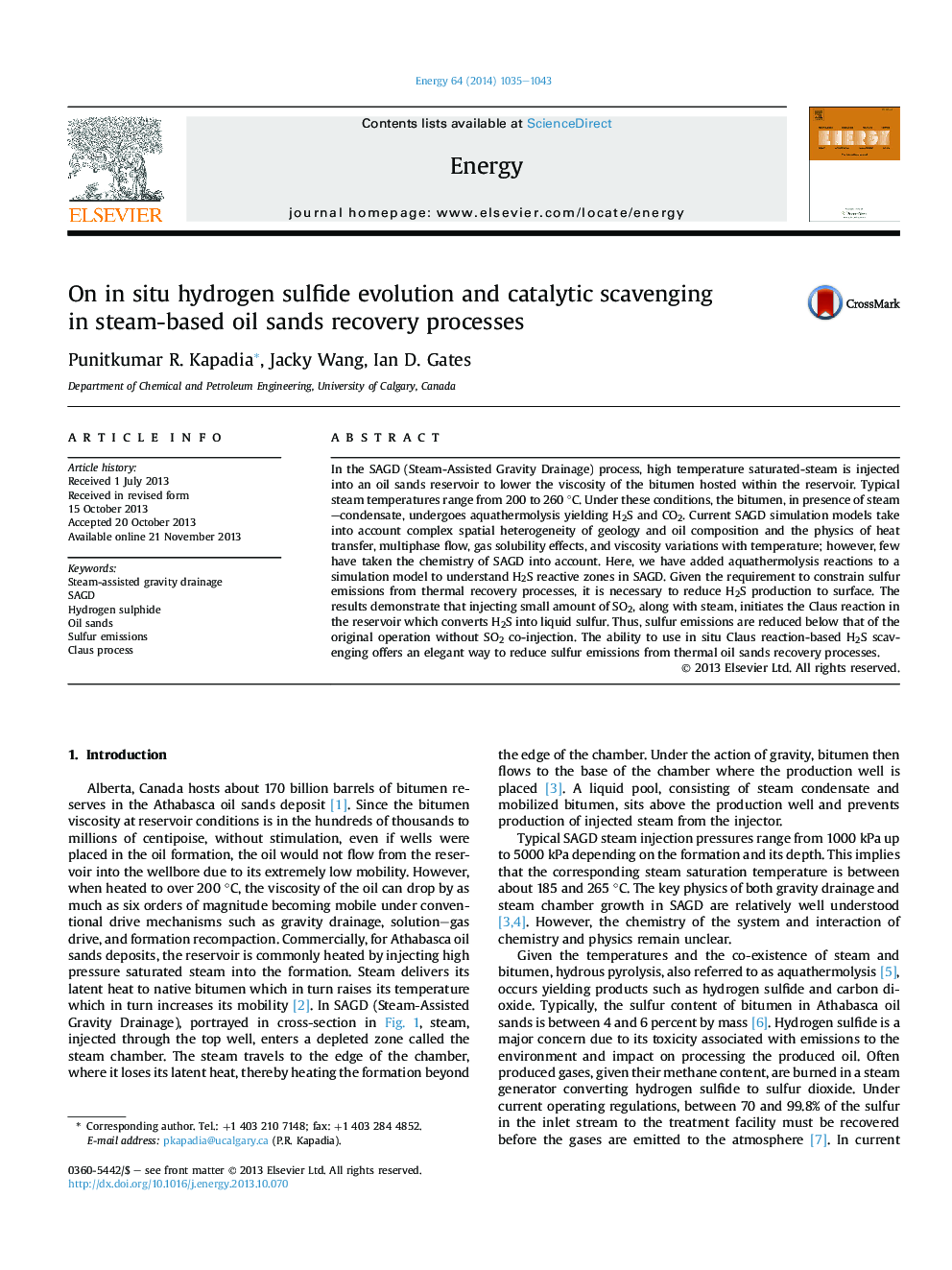| کد مقاله | کد نشریه | سال انتشار | مقاله انگلیسی | نسخه تمام متن |
|---|---|---|---|---|
| 8078920 | 1521482 | 2014 | 9 صفحه PDF | دانلود رایگان |
عنوان انگلیسی مقاله ISI
On in situ hydrogen sulfide evolution and catalytic scavenging in steam-based oil sands recovery processes
ترجمه فارسی عنوان
در محل تکاملی سولفید هیدروژن و فرایند بازیابی کاتالیزوری در ماسه های نفتی مبتنی بر بخار
دانلود مقاله + سفارش ترجمه
دانلود مقاله ISI انگلیسی
رایگان برای ایرانیان
کلمات کلیدی
موضوعات مرتبط
مهندسی و علوم پایه
مهندسی انرژی
انرژی (عمومی)
چکیده انگلیسی
In the SAGD (Steam-Assisted Gravity Drainage) process, high temperature saturated-steam is injected into an oil sands reservoir to lower the viscosity of the bitumen hosted within the reservoir. Typical steam temperatures range from 200 to 260 °C. Under these conditions, the bitumen, in presence of steam-condensate, undergoes aquathermolysis yielding H2S and CO2. Current SAGD simulation models take into account complex spatial heterogeneity of geology and oil composition and the physics of heat transfer, multiphase flow, gas solubility effects, and viscosity variations with temperature; however, few have taken the chemistry of SAGD into account. Here, we have added aquathermolysis reactions to a simulation model to understand H2S reactive zones in SAGD. Given the requirement to constrain sulfur emissions from thermal recovery processes, it is necessary to reduce H2S production to surface. The results demonstrate that injecting small amount of SO2, along with steam, initiates the Claus reaction in the reservoir which converts H2S into liquid sulfur. Thus, sulfur emissions are reduced below that of the original operation without SO2 co-injection. The ability to use in situ Claus reaction-based H2S scavenging offers an elegant way to reduce sulfur emissions from thermal oil sands recovery processes.
ناشر
Database: Elsevier - ScienceDirect (ساینس دایرکت)
Journal: Energy - Volume 64, 1 January 2014, Pages 1035-1043
Journal: Energy - Volume 64, 1 January 2014, Pages 1035-1043
نویسندگان
Punitkumar R. Kapadia, Jacky Wang, Ian D. Gates,
